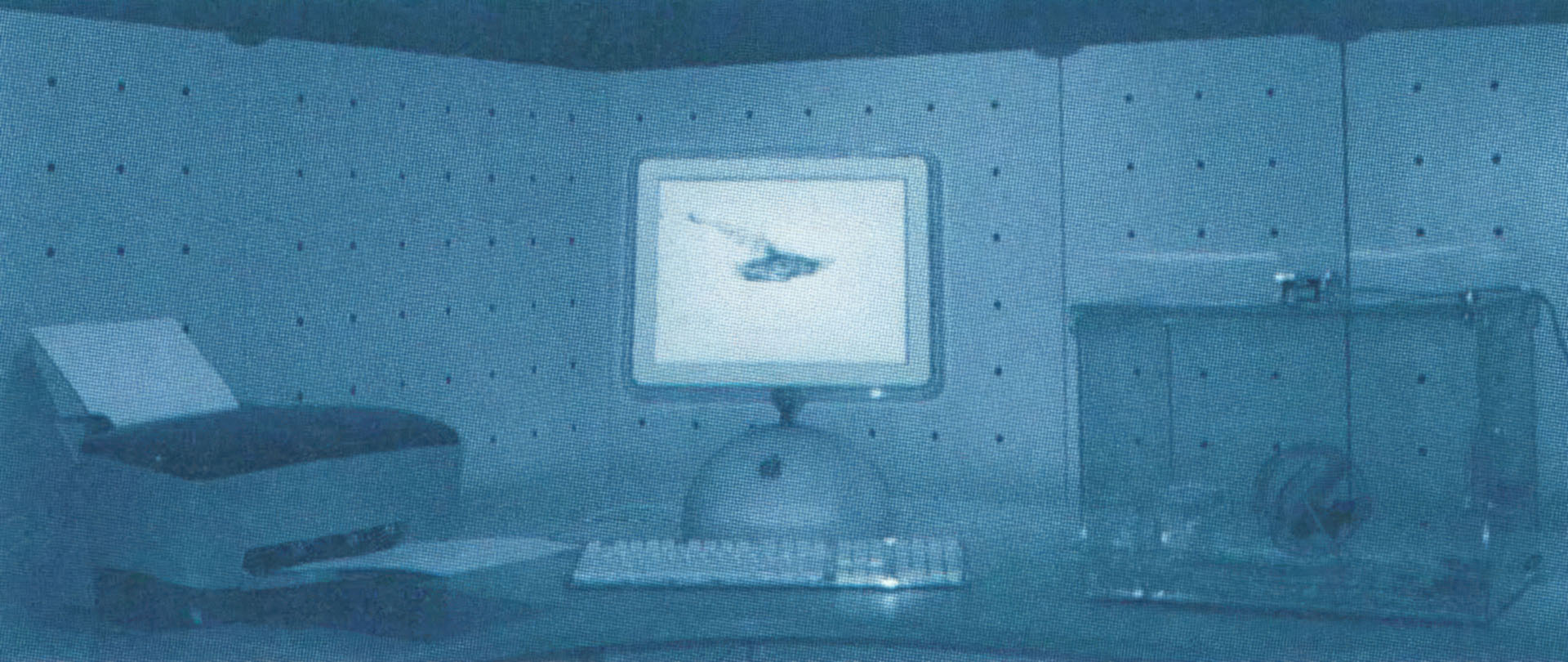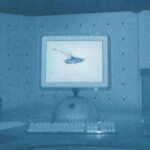“Follow the Mouse” by Tiffany Holmes
Title:
Artist(s) and People Involved:
Exhibiting Artist(s):
Symposium:
Venue(s):
Medium:
Artist Statement:
Introduction
Follow the Mouse is a multimedia installation that portrays a contemporary work environment with a twist. The desktop in this office cubicle features “liveware, ” or an actual mouse in place of standard hardware. The title of the piece, Follow the Mouse, is a common behavior that computer programmers use to make an object trail the mouse pointer around the monitor. It is also, more colloquially, what we all do daily in front of our screens as we work, play, and communicate.
Mice
The formulation of the concept of Follow the Mouse grew out of my early experiences working to create drawings on the computer with typical input devices like trackballs and mice. I have a formal background in painting and experienced a real physical adjustment when I turned in my brushes for the keyboard. The “mouse, ” invented at the Stanford Research Center in 1963, is thought to be one of the great breakthroughs in computer ergonomics because it freed users from the keyboard.
The mouse ignited an explosion of drawing programs that allowed us to transfer gestures to the computer. Despite this supposed freedom, my work with the mouse made me even more aware of physical limits. I began to make experimental input devices for the computer. I also decided to create input tools that would generate art through chance or random occur-renca In Wow the Mouse, a live animal controls the placement of drawn shapes on a monitor.
Monotypes
Each drawing represents a unique collaborative effort between mouse, artist, and computer. Every half second, a spy camera records the mouse’s position while the computer compares that location to the next. Specific mouse actions produce different marking patterns. Quick darts from side to side in the cage produce long horizontal shapes. When the mouse is very still, shapes will begin rotating clockwise, marking the position of the animal at rest. Hourly printouts capture an archive of incremental motion on paper.






